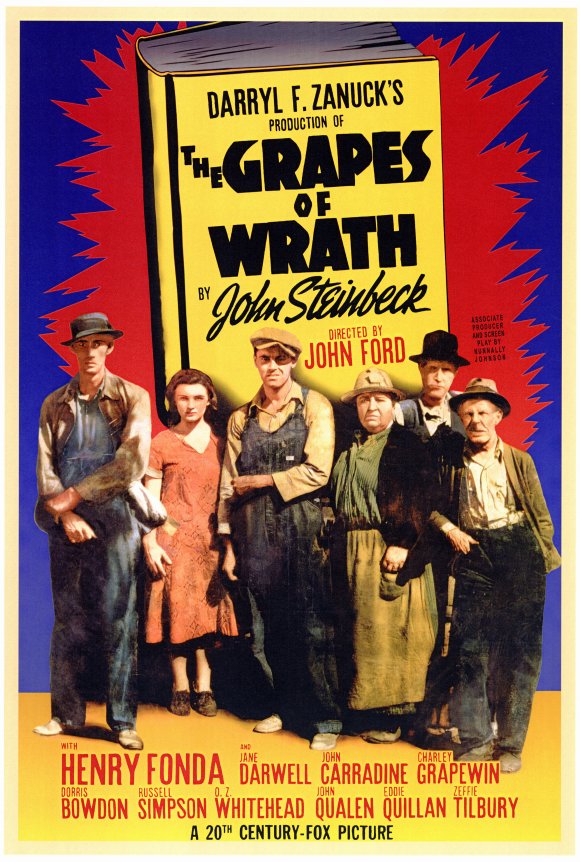Summary of “The Grapes of Wrath” (1940)
- Plot Overview: The Joad family, displaced from their Oklahoma farm during the Great Depression, travels to California in search of a better life.
- Themes: The novel explores themes of hardship, migration, family, and social injustice.
- Characters: Main characters include Tom Joad, Ma Joad, Pa Joad, and Jim Casy.
- Historical Context: Set during the Great Depression and the Dust Bowl, highlighting the struggles of migrant workers.
Introduction
“The Grapes of Wrath,” published in 1939 and adapted into a film in 1940, is a powerful narrative by John Steinbeck that captures the essence of the Great Depression and the Dust Bowl. The story follows the Joad family as they are forced off their land in Oklahoma and journey to California in search of a better life. This article delves into the plot, themes, and historical context of this seminal work.
Plot Overview
The narrative begins with Tom Joad returning home after being paroled from prison, only to find his family farm deserted. The Joad family, facing economic hardship and environmental disaster, decides to head west to California, lured by the promise of jobs and prosperity.
The journey is arduous, marked by loss and suffering. Along the way, they encounter other displaced families and face numerous challenges, including exploitation and prejudice. The family dynamics are central to the narrative, with Ma Joad emerging as the resilient matriarch who holds the family together.
In California, the Joads’ hopes for a better life are quickly dashed. They find themselves in overcrowded camps with other desperate migrants, struggling to find work and facing hostility from locals. The novel ends on a somber note, emphasizing the ongoing struggle and resilience of the human spirit.
Themes
Hardship and Survival
Steinbeck vividly portrays the severe economic and environmental conditions that force the Joad family off their land. The novel underscores the relentless struggle for survival faced by thousands of migrant families during the Great Depression. The harsh realities of poverty and displacement are central to the story, illustrating the broader social and economic issues of the time.
Family and Community
The strength and unity of the Joad family are pivotal to the narrative. Despite the numerous hardships they face, the family remains a cohesive unit, with Ma Joad’s unwavering resolve playing a crucial role. The novel also explores the broader sense of community among the migrant workers, highlighting the importance of solidarity in the face of adversity.
Social Injustice
“The Grapes of Wrath” is a powerful critique of the social injustices faced by migrant workers. Steinbeck exposes the exploitation and discrimination that these workers endure, painting a stark picture of the inequities in American society. The novel calls for empathy and social reform, urging readers to recognize the humanity of those suffering.
Historical Context
“The Grapes of Wrath” is set against the backdrop of the Great Depression and the Dust Bowl, a period of severe economic downturn and environmental disaster in the United States. The novel captures the widespread displacement of farmers and the mass migration to California, where many hoped to find work and a better life.
The Dust Bowl, caused by a combination of drought and poor agricultural practices, devastated the Great Plains, turning fertile land into a barren wasteland. This environmental catastrophe compounded the economic woes of the Great Depression, leading to widespread poverty and displacement.
Steinbeck’s portrayal of the migrant experience is based on extensive research and firsthand observation. His commitment to social justice and his deep empathy for the plight of the dispossessed are evident throughout the novel, making it a timeless and poignant commentary on human resilience and dignity.
“The Grapes of Wrath” remains a powerful and relevant work, offering a profound exploration of hardship, family, and social justice. Its depiction of the struggles faced by migrant workers during one of the most challenging periods in American history continues to resonate with readers today.







